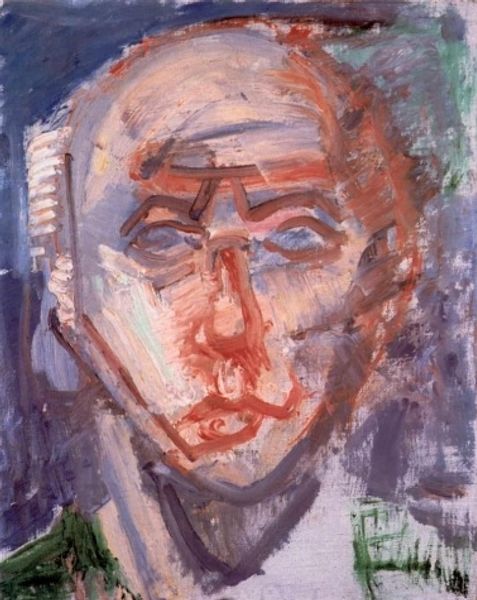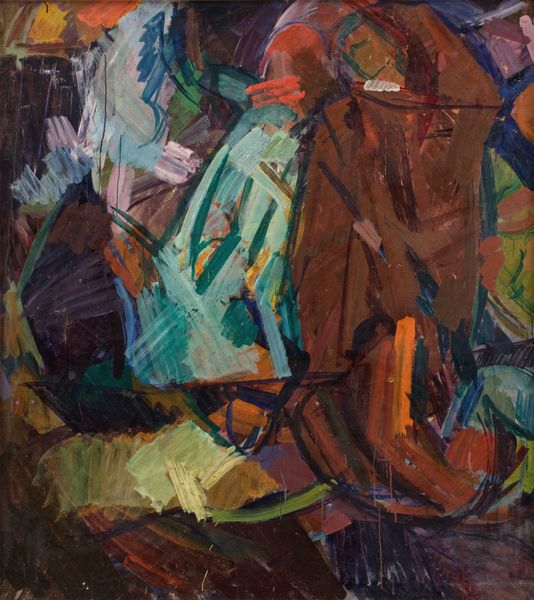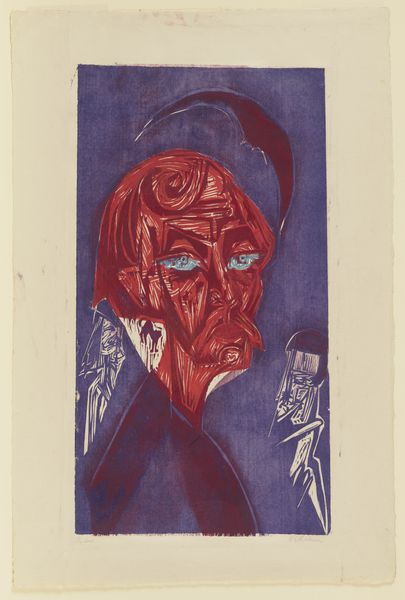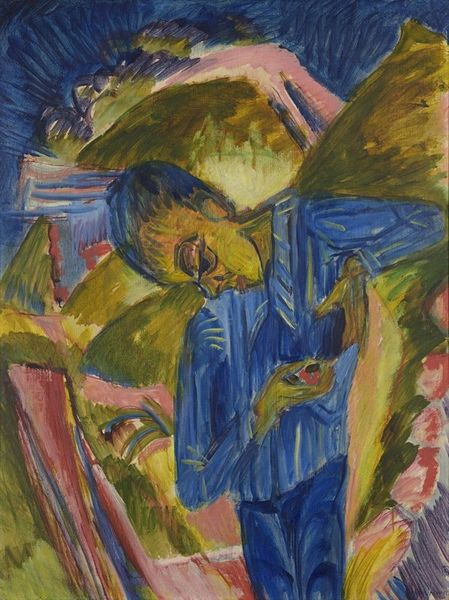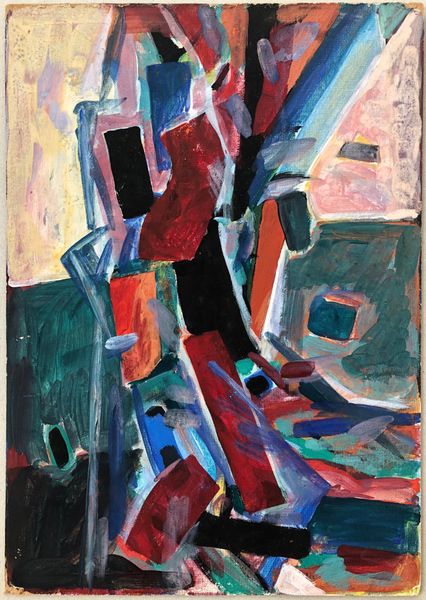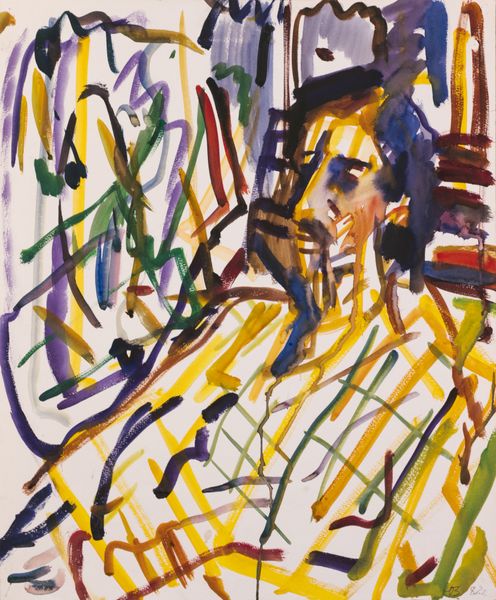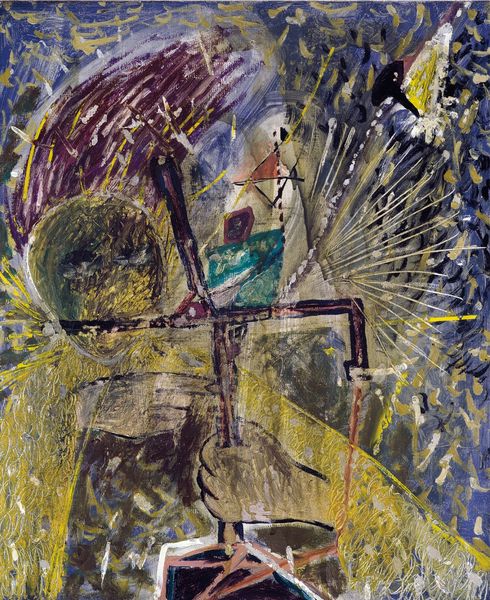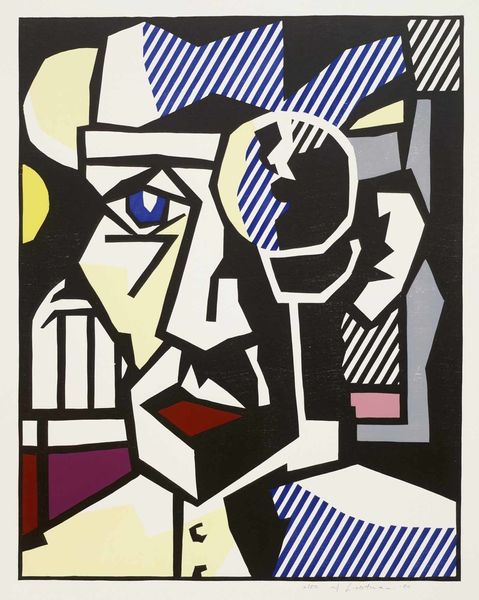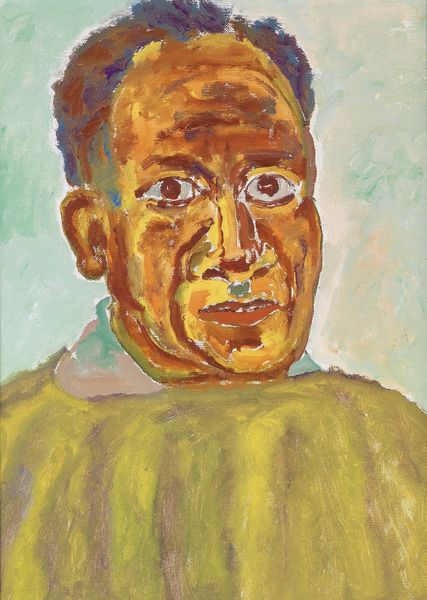
painting, acrylic-paint
#
portrait
#
painting
#
pop art
#
acrylic-paint
#
neo expressionist
#
abstraction
#
portrait art
#
modernism
Copyright: Yuri Zlotnikov,Fair Use
Curator: We're looking at Yuri Zlotnikov's "Composition #39," created in 1972. Zlotnikov, active during a fascinating period of Soviet art history, uses acrylic on canvas. Editor: Immediately, I'm struck by the raw, almost urgent quality of the brushstrokes. The figure is defined by these stark planes of color; there’s a brutal honesty in its abstraction. Curator: Zlotnikov operated within a context where artistic expression was often surveilled and controlled. This work, with its defiance of traditional representation, could be seen as a subtle act of resistance. What does it suggest about the limitations and constraints placed upon artists? Editor: Interesting, so is the raw brushwork an expression of the labour in getting to the finished result or perhaps just a necessity that stemmed from the accessibility of cheap materials? Either would emphasize that the construction of the painting itself isn't being disguised. It’s right there, unadorned, in front of us. Curator: Precisely. His art stands as a social document reflecting the complex political landscape that was prevalent during that era. But how do we read its portrayal within contemporary constructs of identity and visibility? I mean, in relation to the gaze, visibility, surveillance... Editor: Zlotnikov pushes back against refined artistic consumption by foregrounding the labour in mark making through what is painted. Is the way in which it does this maybe a consideration for why its portrayal of gender and race might fall outside the mainstream gaze? Curator: That’s insightful; he presents a kind of visual puzzle, demanding the viewer confront not only the subject but also the conditions of its creation and reception. Its abstraction doesn't allow easy categorization within the prevailing ideological frameworks. Editor: Ultimately, the portrait challenges the division between high art and the working methods or materials required to make it. It prompts us to reconsider the societal value placed on certain aesthetic conventions as much as political readings we attach. Curator: Yes. In this piece, the aesthetic and the political are intertwined in a very immediate and profound way. Editor: Indeed, and engaging with Zlotnikov is such a necessary addition to understand labour today!
Comments
No comments
Be the first to comment and join the conversation on the ultimate creative platform.
